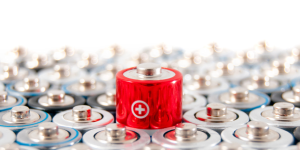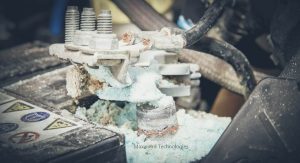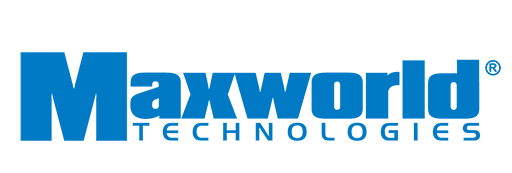Lithium Iron Phosphate VS Lithium-Ion Batteries
Things aren’t quite as simple as installing a new set of lithium-ion batteries and forgetting about them when you’re seeking for power sources to run various components at your organization. The importance of selecting the proper battery type cannot be overstated given the popularity of modern technology, electric vehicles, and portable power tools.

Lithium ion batteries have become one of the best-performing batteries in recent years and are frequently utilized in many different gadgets and applications. However, there is another kind of battery that frequently goes unnoticed: lithium iron phosphate batteries. We therefore explain the distinctions between the two in this article to give you the best chance possible of choosing the appropriate batteries.
Chemistry
The charge and discharge rates of batteries are controlled by C-rates. A battery is frequently rated at 1C, meaning that it should be able to supply 1A of charge for an hour when fully charged at a rate of 1AH.
Lithium-Ion
Since they are made up of various graphite anodes, lithium-ion batteries typically have diverse chemistry for the cathode and lithium manganese oxide/lithium cobalt dioxide. The energy density of lithium-ion is 150–200 watt-hours per kilogram, and its voltage is 3.6. It charges at a rate of between 0.7C and 1.0C while discharging at 1C.
Iron phosphate of lithium (LiFePO4)
The energy of this battery, which contains an iron phosphate cathode and a graphite anode, is 90–120 watt-hours per kilogram. The charge rate is 1C, and the voltage is either 3.2V or 3.3V. A lithium iron phosphate battery should discharge between 1 and 25C.
Effort Levels
The energy levels of the two batteries vary significantly from one another. Lithium-iron phosphate has a lower energy rate of 90/120 Wh/KG compared to lithium-ion’s 150/200 Wh/KG. Lithium-ion cells are preferred for electronics that use a lot of power and are more likely to exhaust internal batteries.
Cycle of Life
Particularly when they’re being used in hotter conditions, lithium-ion batteries are somewhat unstable. Unlike lithium iron phosphate batteries, which have a lifespan of 1,000–10,000 cycles, most lithium-ion batteries have between 500 and 1,000 life cycles. Because of this, lithium iron phosphate batteries perform significantly better in devices that need to run continuously for extended periods of time.
Long-Term Retention
It’s crucial to choose cells that retain their charge when storing batteries for an extended period of time. The battery should, in theory, emit the desired charge whether or not it has been stored. The fact that both batteries have a respectable storage life is good news. Lithium-ion batteries have a shelf life of about 300 days, whereas lithium iron phosphate batteries can last up to 350 days.
Safety
Lithium iron phosphate batteries may be the best option if safety is a priority in your battery purchasing decision. Its exceptional chemical and thermal stability is the reason for this. It maintains its coolness and typically does not experience thermal runaway, allowing the battery to function as it should. In contrast, lithium-ion batteries’ chemical makeup is unstable and has a high energy density. Compared to lithium iron phosphate, it heats up more quickly, making it a poor material to use when temperatures change.
Applications
Lithium iron phosphate batteries are ultimately the safer choice and advantageous as long as the application doesn’t require great energy density. Some of the applications that fit include:
Vehicle electric motors
applications in the military
medical equipment
The weight of lithium iron phosphate, which is heavier than lithium-ion and may not be appropriate for portable applications, is one factor working against it. Lithium-ion batteries are therefore chosen for a variety of applications, including: smartphones, laptops, and tablets.
It’s crucial to select the proper battery for your application if you want it to operate at its peak efficiency.
The Finding
The most sought-after power source for high energy use gadgets is currently lithium chemistry, thanks to significant advancements in battery technology. Its success has been aided by its long shelf life and ability to provide a consistent source of power for extended periods of time.
Since you now know how lithium-ion and lithium iron phosphate batteries differ, you can choose the best cells for your application and be sure that everything will work as it should.
Contact us on our website if you have any inquiries about lithium technology or if you’d like to place an order.











